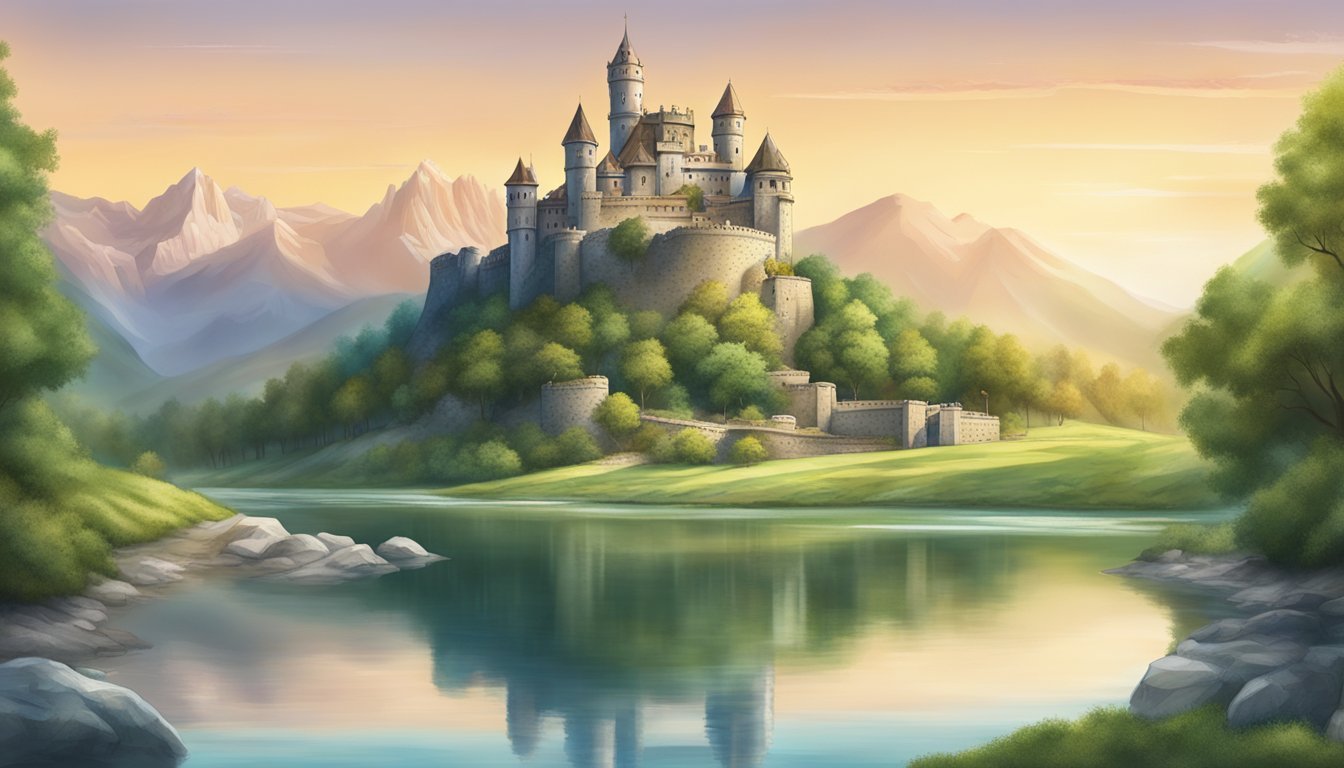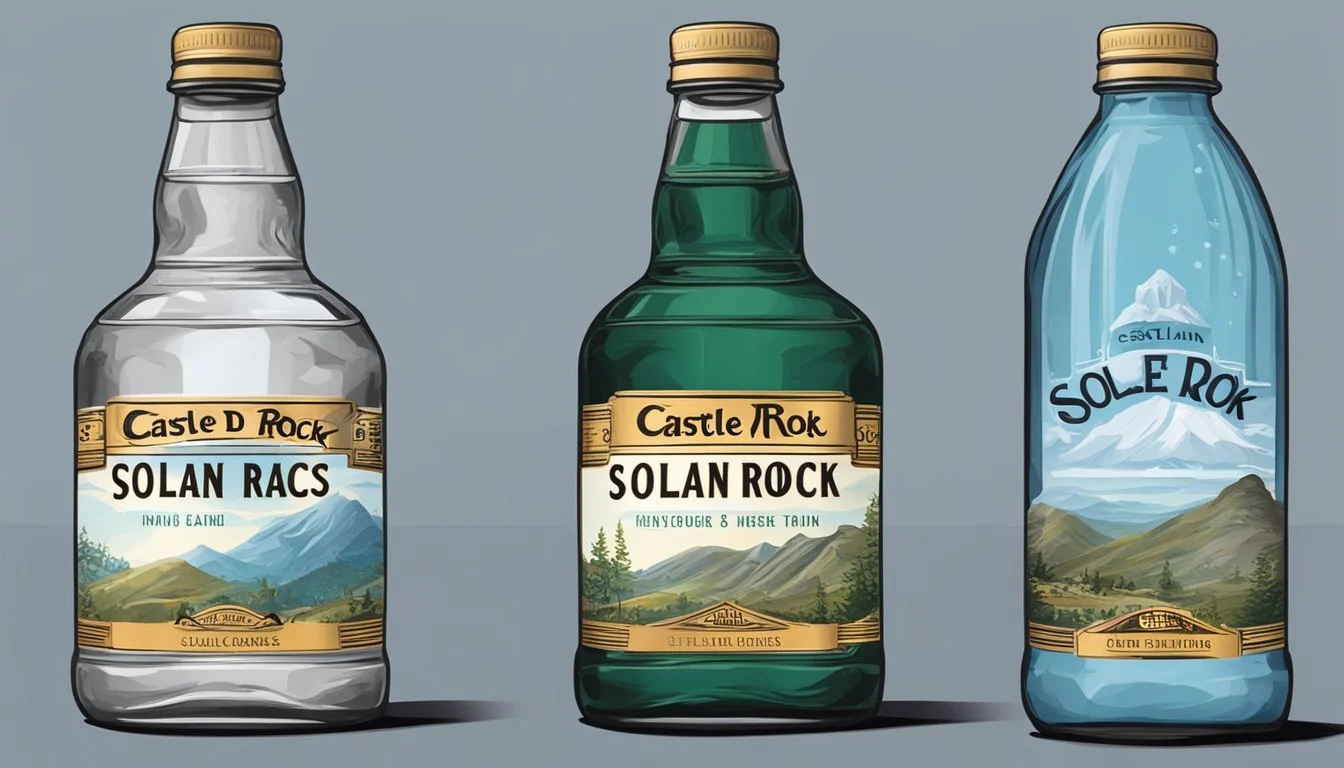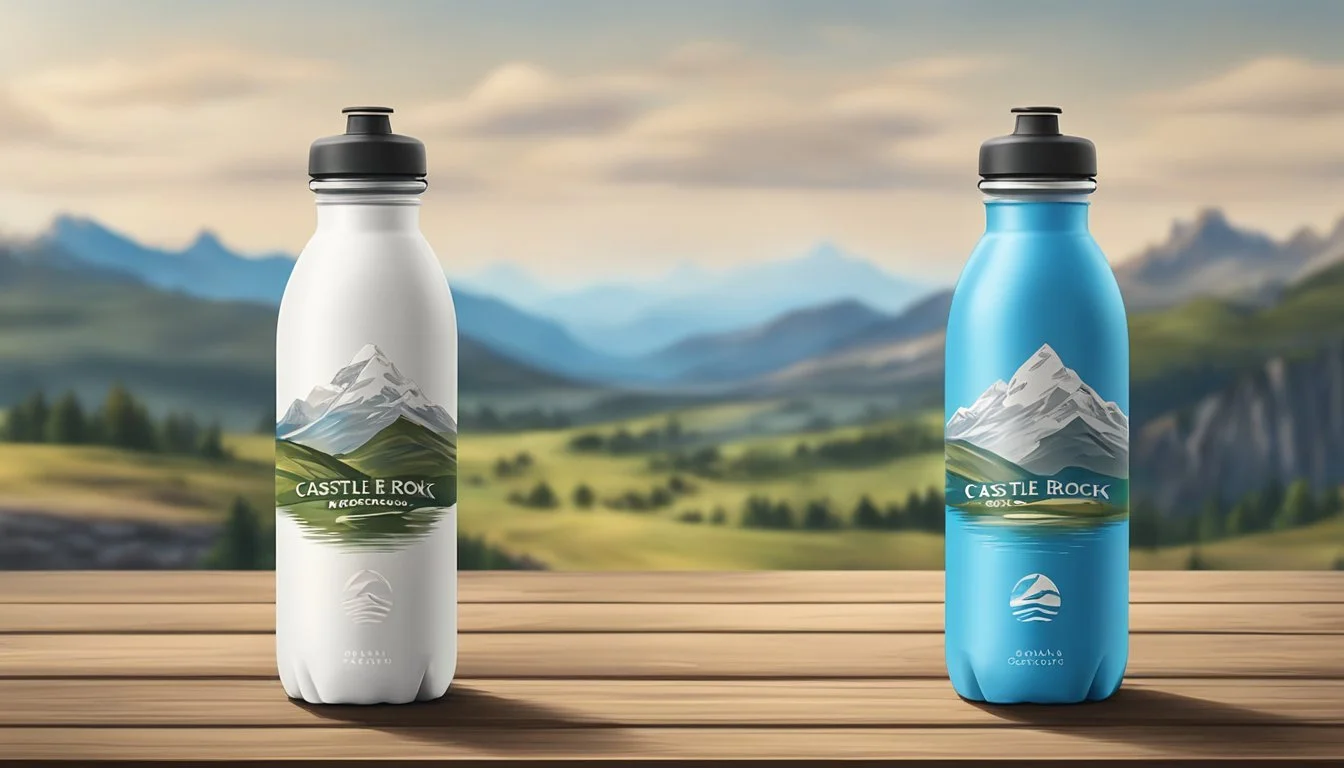Castle Rock vs. Solán de Cabras
Which Bottled Water Reigns Supreme?
Bottled water enthusiasts often find themselves comparing Castle Rock and Solán de Cabras, two notable brands in the market. Castle Rock, known for its crisp, invigorating taste reminiscent of a morning hike in the mountains, offers a distinct experience with its spring water sourced from pristine locations. On the other hand, Solán de Cabras, a Spanish brand with a centuries-old history, provides a smooth and slightly minerally taste that many find appealing.
When evaluating quality, Solán de Cabras tends to stand out with its naturally chilled flavor and luxurious packaging, often seen in its signature blue glass bottle. Despite Solán de Cabras’ elegant presentation, Castle Rock's straightforward and pure spring water appeals to those seeking a refreshing and clean hydration option without the premium price tag.
Ultimately, the choice between Castle Rock and Solán de Cabras comes down to personal preference. Whether you prioritize a crisp and invigorating taste or a refined and smooth flavor, both brands offer unique qualities that cater to different tastes and occasions.
Understanding Bottled Water
Bottled water is a widely consumed beverage, chosen for its convenience, quality, and taste. This section explores the different types of bottled water, the regulatory standards they adhere to, and the health benefits of mineral water.
Types of Bottled Water
There are several types of bottled water available on the market, each with unique sources and characteristics. Spring water is collected directly from natural springs and is often considered pure. Mineral water contains naturally occurring minerals and must come from a certified source without being altered. Purified water is processed through methods like distillation, deionization, or reverse osmosis to remove impurities and contaminants. Artesian water comes from confined aquifers and often boasts high quality due to natural filtration processes.
Regulatory Standards of Quality
Regulatory standards for bottled water ensure safety and quality for consumers. The U.S. Food and Drug Administration (FDA) and the Environmental Protection Agency (EPA) oversee bottled water standards. The FDA sets limits on contaminants such as lead, arsenic, and bacteria. Labeling regulations require accurate information about the water source and treatment processes. In Europe, the European Food Safety Authority (EFSA) oversees similar regulations, often focusing on the mineral content and natural purity of the water.
Health Benefits of Mineral Water
Mineral water, sourced from natural springs, is rich in beneficial minerals like calcium, magnesium, and potassium. These minerals can support bone health, improve hydration, and promote digestion. For instance, calcium strengthens bones and teeth, while magnesium aids muscle function and reduces the risk of heart disease. Many consumers believe that the natural mineral content in this water offers superior hydration and taste compared to other types of bottled water.
In conclusion, understanding the types of bottled water, the regulatory standards that govern them, and the health benefits of mineral water can help consumers make informed choices about their beverage options.
Historical Background
Exploring the ancient origins of these two premium bottled waters reveals fascinating histories spanning millennia. Both Castle Rock and Solán de Cabras bring unique stories and heritage to the table that enhance their prestige.
The Legacy of Castle Rock
Castle Rock Water originates from the pristine springs nestled in the Sierra Nevada Mountains in California. Known for its stunning natural clarity, the region has been prized for its water quality since the early 20th century.
In the early 1900s, local communities started tapping the area's natural springs for their outstanding purity. Over time, Castle Rock Water gained a reputation for its refreshing taste and mineral content, attracting a growing consumer base.
Significant strides in environmental stewardship and sustainable practices have been part of its development as a brand. Today, Castle Rock is celebrated not only for its premium water but also for its commitment to protecting the natural sources from which it flows.
Solán de Cabras: A Historical Overview
Solán de Cabras boasts a rich history stretching back over 3,600 years. The spring, located in the Serranía de Cuenca mountains at an elevation of 950 meters above sea level, is a site renowned for its natural mineral water.
King Carlos III declared it a royal site during his reign in the 18th century, recognizing the water's therapeutic qualities. The water's journey begins with rainfall, taking more than three millennia to filter through layers of rock, absorbing essential minerals like bicarbonate, calcium, sodium, potassium, and magnesium along the way.
The iconic blue glass bottle, which protects the water from any alteration, symbolizes Solán de Cabras' dedication to premium quality and rich heritage. The brand's longevity and reverence as a natural wonder validate its status in the global bottled water market.
Physical and Chemical Properties
When comparing Castle Rock and Solán de Cabras bottled water, examining their physical and chemical properties offers significant insight. Specific factors like mineral content, pH levels, and temperature impact taste, health benefits, and overall quality.
Comparing Mineral Content
Mineral content plays a considerable role in the taste and health benefits of bottled water. Castle Rock water is known for a balanced mix of minerals. It contains moderate levels of sodium, calcium, and magnesium.
Mineral Castle Rock (mg/L) Solán de Cabras (mg/L) Sodium 5 35 Calcium 8 56 Magnesium 2 10 Potassium 3 0.4 Bicarbonate 24 250
In contrast, Solán de Cabras boasts higher calcium and magnesium levels, imparting a distinct taste profile. The calcium-magnesium ratio is particularly pronounced in Solán de Cabras, often favored by consumers seeking mineral-rich water.
Understanding pH and Acidity
The pH level of bottled water indicates its acid or alkaline nature, influencing both taste and potential health effects. Castle Rock water typically registers a pH around 7.5, placing it in the alkaline range. This moderate alkalinity contributes to a smooth, less acidic taste.
Solán de Cabras, on the other hand, has a slightly lower pH, typically around 7.4. While not drastically different from Castle Rock, this subtle variation can affect individual preferences. The mild acidity of Solán de Cabras lends a crisp and refreshing sensation, appealing to those who appreciate a sharper taste profile.
Temperature and Freshness
Temperature and freshness significantly impact the perceived quality of bottled water. Castle Rock water maintains its freshness due to the controlled bottling processes, ensuring that the water retains a natural coolness. This is ideal for those who prefer a naturally chilled refreshment.
Solán de Cabras, sourced from the Serranía de Cuenca mountains, benefits from a unique environmental condition. The high-altitude spring (950m above sea level) where it originates provides a naturally cool temperature. Combined with its iconic blue glass bottle that protects against light, Solán de Cabras offers preserved freshness and purity.
Sourcing and Processing
Castle Rock and Solán de Cabras both source their water from pristine natural springs, ensuring exceptional purity and quality. Understanding the unique characteristics of their spring sources and natural filtration processes highlights how each brand maintains its distinct taste and health benefits.
Spring Sources and Natural Filtration
Castle Rock sources its water from the majestic Mount Shasta in California. The spring water is naturally filtered through layers of volcanic rock, enriching it with minerals and giving it a crisp, clean taste. This natural filtration helps remove impurities while preserving essential minerals.
Solán de Cabras sources its water from the Serranía de Cuenca mountains in Spain. The water originates from thunderstorms over 3,600 years ago, seeping through the mountains' geological layers. The natural filtration through clay, limestone, and other minerals imparts unique flavor and slight minerality to the water. This meticulous process ensures a fresh and naturally chilled taste.
Environmental and Sustainability Concerns
Castle Rock and Solán de Cabras both prioritize sustainability in their operations, focusing on water source management and packaging solutions to reduce environmental impact.
Water Source Management
Castle Rock Water sources its water from a spring in the pristine Shasta-Trinity National Forest in California. The company employs practices to ensure minimal disruption to the local ecosystem. They perform regular environmental impact assessments and maintain strict regulations to protect surrounding habitats.
Solán de Cabras sources its water from the Serranía de Cuenca mountains in Spain. The brand emphasizes the purity and historical significance of its water, filtered through natural processes over 3,600 years. They focus on sustainable extraction methods to ensure the spring remains viable for future generations. Reduced water consumption rates by 51% since 2011 reflect their commitment to sustainable water use.
Packaging and Recycling Efforts
Castle Rock uses eco-friendly packaging, opting for materials that have minimal environmental impact. Their bottles are made from recycled PET plastic, and they continually work towards reducing packaging waste. Castle Rock also encourages customers to recycle through incentivized programs.
Solán de Cabras packages its water in distinctive blue glass bottles, which are more sustainable compared to plastic. The company has significantly reduced its use of cardboard and PET by 300,000 kg and 900,000 kg, respectively, by adopting ecodesign strategies. These efforts aim to minimize waste and promote recycling among consumers, aligning with their environmental goals.
Brand Reputation and Endorsements
Both Castle Rock and Solán de Cabras have cultivated strong reputations in the bottled water market, aligning with celebrities and sports teams to boost their brand image.
Celebrity Partnerships
Castle Rock has garnered attention through its affiliations with various Hollywood stars. Actors like Jennifer Aniston have been seen promoting the brand, lending a sense of glamour and trust. Celebrities endorsing Castle Rock often highlight its commitment to sustainability and purity, strengthening its appeal to environmentally conscious consumers.
Solán de Cabras, a premium Spanish brand, also leverages celebrity endorsements. Renowned for its distinctive blue bottle, it has been associated with high-profile personalities in Spain. The brand often appears in upscale events and venues, positioning itself as a symbol of luxury and exclusivity.
Sports Associations
Castle Rock actively engages in partnerships within the sports industry. It sponsors various local sports events and teams, emphasizing hydration and performance. These sponsorships enhance its visibility and convey a message of health and wellness.
Solán de Cabras boasts a prominent relationship with Real Madrid, one of the most famous football clubs in the world. This association not only amplifies its global presence but also aligns the brand with excellence and athleticism. The collaboration with Real Madrid reinforces Solán de Cabras' image as a premium choice for athletes and sports enthusiasts.
User Experience and Consumer Preference
Castle Rock and Solán de Cabras present unique experiences for bottled water enthusiasts, focusing on nuanced flavor profiles and distinct packaging designs.
Flavor Profile and Mouthfeel
Castle Rock water is celebrated for its crisp and refreshing taste. The natural minerals provide a balanced flavor that many find invigorating. As you sip, the water feels smooth and light, making it perfect for hydration without any aftertaste.
Solán de Cabras offers a more refined experience. The water is light and clean with a barely sweet undertone, often described as having a velvety texture that gently transitions to a subtle mineral presence. This distinctive flavor profile arises from the mineral-rich sources in the Serranía de Cuenca mountains, 950 meters above sea level.
Packaging Design and Convenience
Castle Rock opts for a minimalist design that emphasizes environmental responsibility. The bottles are made from recycled materials, which appeals to eco-conscious consumers. Their design ensures easy grip and transport, making it convenient for on-the-go hydration.
Solán de Cabras stands out with its iconic blue glass bottle. This packaging not only protects the water's taste and properties but also adds an element of elegance. Priced higher due to its premium quality, the blue bottle has a distinct visual appeal that complements its premium positioning. It's often regarded more as a lifestyle choice than a simple hydration solution.
Comparative Analysis
Castle Rock and Solán de Cabras bottled waters each offer unique characteristics that appeal to different preferences and needs. Their sensory qualities and nutritional profiles contribute to their distinct positions in the market.
Taste Tests and Water Sommelier Opinions
Water sommeliers often highlight the crisp and refreshing profile of Castle Rock, which evokes the sensation of a morning hike in the mountains. Its spring water origin provides a clean taste with subtle natural flavors.
In contrast, Solán de Cabras is praised for its balanced and smooth texture. Originating from the Serranía de Cuenca mountains, it has a mineral-rich composition that contributes to its unique mouthfeel and slight mineral aftertaste, appealing to individuals who prefer a more pronounced character in their water.
Nutritional Benefits for Specific Diets
Castle Rock water is often favored by those on low-sodium diets due to its minimal sodium content. This makes it a suitable option for people managing blood pressure or other cardiovascular conditions.
Solán de Cabras, on the other hand, boasts a mix of beneficial minerals such as bicarbonate, calcium, sodium, potassium, and magnesium. These elements can support overall bodily functions and are particularly beneficial for pregnant women who may require additional nutrients.
Both brands serve different health needs and dietary preferences, offering consumers options based on their specific nutritional requirements.
Conclusion
Castle Rock and Solán de Cabras each offer distinct qualities that make them stand out in the bottled water market. Both brands have unique origins and features that cater to different preferences and needs.
Final Thoughts on Castle Rock vs. Solán de Cabras
Castle Rock is renowned for its pure and crisp flavor, often likened to a refreshing mountain hike. This spring water is sourced from California's pristine environment, providing a balanced taste many find pleasant. Its optimal calcium-magnesium ratio makes it a healthy choice for those mindful of their mineral intake.
Solán de Cabras boasts a long history, with water originating from the Cuenca hills in Spain. Packaged in an iconic blue glass bottle, it provides a premium feel and taste. The balanced mineral content and pleasant flavor make it a favorite at luxury restaurants and among discerning consumers. Its unique properties emphasize purity, appealing to those seeking authenticity.








